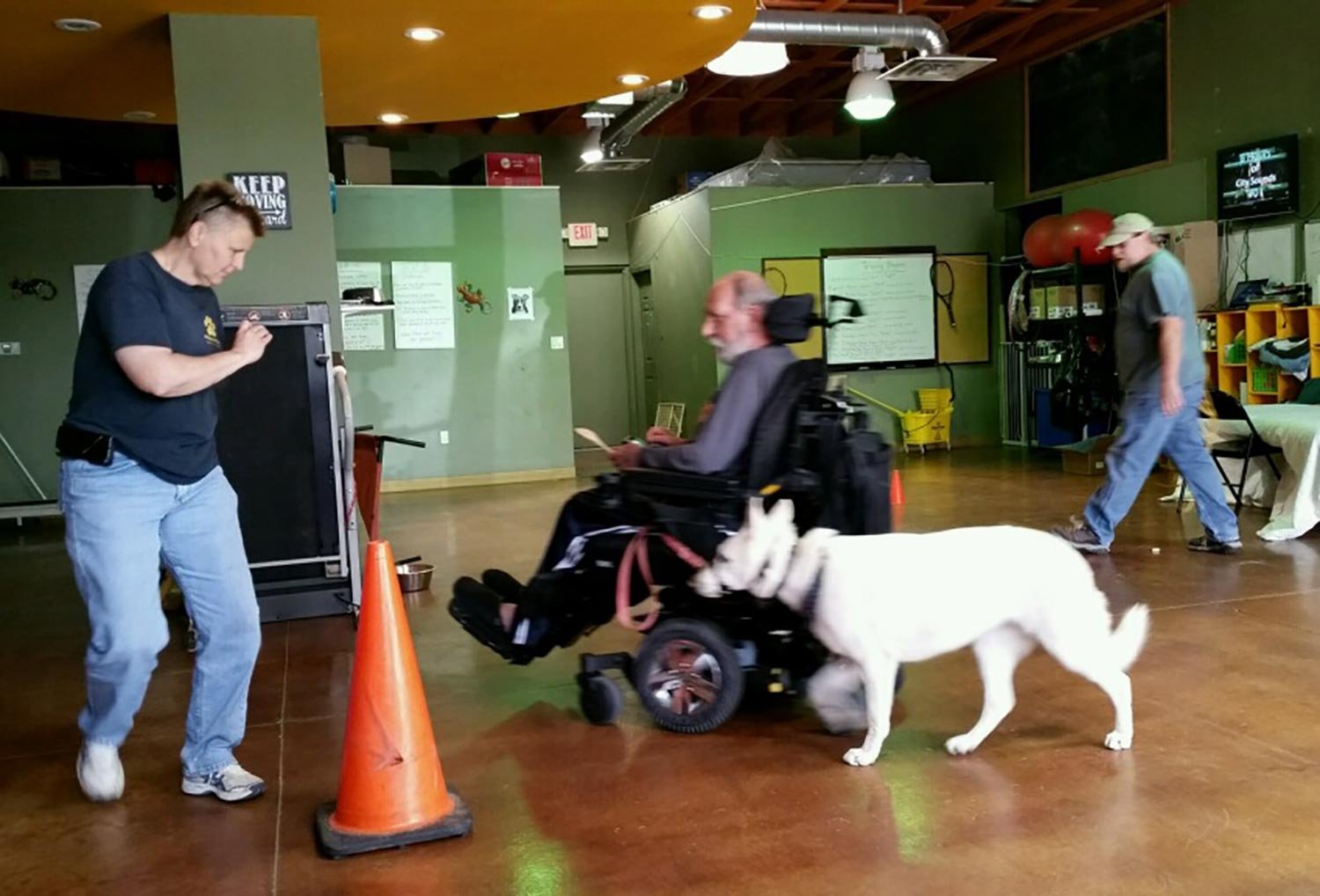Service & Therapy Dogs
A brief explanation of why the dogs we produce are superior to all others as service animals;
Service dogs improve the lives of people with a wide range of disabilities, whether physical, neurological, or psychiatric. A trained service dog will mitigate symptoms from disabilities such as: autism, anxiety disorders, depression, diabetes, epilepsy, narcolepsy, post-traumatic stress (PTS or PTSD).
Polarbear’s Cheyanne with her human Gene.
Our mission when we started twenty (20) years ago was to produce dogs with rare combination of intelligence, temperament and human-motivation. We are pleased to report that many of our dogs have become natural service animals with little or no training by their owners or professionals. Whether someone is diagnosed or not, many of our dogs alert their humans in emergency situations and we have many stories to back that up. If you’re interested in purchasing one of our dogs to become a service and/or therapy dog, please let us know on your application. In the meantime, if seeking professional training, we recommend these skill sets:
Foundational Disability Skills Set
Dogs in the Foundational Disability Skills category will be able to perform as follows:
- “Lap” cue: Dog places its paws on your lap
- “Visit” cue: Dog places its head on your lap from either side and allows you to pet its head (not directly in front for etiquette purposes)
- “Post” or “Ground Me/Anchor” cue: Dog sits with back to handler in between knees facing forward
- “Cuddle” cue: Dog lies next to target person
- “Snuggle” cue: Dog places its paws on your lap and head on your shoulder
- Dog can perform all tasks verbally when handler is in multiple positions such as sitting on the floor, in a chair or on a bed.
- “Front” or “Block” cue: Dog positions itself in front of handler
- “Circle” cue: Dog walks circles around the handler
Retrieval Skills Set
- Pick-up item from ground and brings to person (“Get it” and “Give” cues)
- “Up” cue: Dog places front paws on indicated object (i.e. wall, table, store counter) - “Lap” cue: Dog places its paws on your lap.
- “Visit” cue: Dog places its head on your lap from either side and allows you to pet its head (not directly in front for etiquette purposes)
- Combination instructions (example: “Get It”, “Lap”, “Give” with same object)
- Cleaning up and putting items in bins, trash, or laundry basket
- Retrieval of certain things by name
Calm Skills Set
Dogs in the Calming category will be able to perform as follows:
- Apply or receive deep pressure therapeutically
- Cuddle on cue
- Interrupt repetitive movements or compulsive behaviors
- Lead to uncrowded area or place to sit down
- Respond to an anxiety or panic attack
- Interrupt nightmares or night terrors

